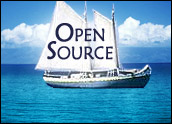
Taking on entrenched players in the virtualization realm, including VMware, Oracle has unveiled a new server virtualization software product that it claims is much more efficient than its competitors’ offerings.
Oracle is touting the product, Oracle VM, as being faster, cheaper and scalable. It was first announced earlier this week at the Oracle OpenWorld user conference. The Xen hypervisor-based, open source server software and integrated Web browser management console supports both Oracle and non-Oracle applications.
Oracle VM is “up to three times more efficient than existing products from other vendors,” Oracle said. Because it will be backed by Oracle, companies using Oracle VM “will have a single point of support for their entire virtualization environments, including Linux operating system and Oracle products,” noted the company.
Get It Free
Oracle’s server virtualization offering features easy setup consisting of a single install, patching and upgrading, the company said. Pre-configured virtual machine images of Oracle Database and Oracle Enterprise Linux enable fast deployment of the new VM, and it said the new software is available at “a fraction of the cost when compared to other vendor products,” Oracle said.
Oracle VM will be available for free via download, starting Wednesday.
Round-the-clock, enterprise-class support will cost US$499 per year per system for systems with up to two CPUs and $999 yearly per system for systems with unlimited CPUs, said Oracle.
The new product extends the company’s support for grid computing, Oracle said. By combining VM with Oracle’s other grid computing applications, enterprises can virtualize all their infrastructure resources, data and applications, “providing a complete virtualization solution for the data center and creating a cost effective, efficient and agile IT environment,” said the company.
Businesses can “optimize resource consolidation” by using VM with Oracle Unbreakable Linux, and run Oracle Database, Oracle Fusion Middleware, Oracle Enterprise Manager and Oracle Applications, Oracle Chief Corporate Architect Edward Screven said.
Oracle products supported by VM include Database 10.2.0.3 and 11.1, Application Server 10gR2 and 10gR3, Enterprise Manager 10.2.0.4, TimesTen 7.0.3.1, Berkeley DB 4.6, E-Business Suite 11.5.10 and 12, PeopleSoft Enterprise 9.0, PeopleTools 8.49.07 and above, Siebel CRM 8 and Hyperion 9.3.1.
The software supports Linux and Windows guest operating systems including: Oracle Enterprise Linux 4 and 5; Red Hat Enterprise Linux (RHEL) 3, RHEL4 and RHEL5; Windows 2003, Windows Server 2003 and Windows XP (on HV capable hardware), said Oracle.
It is apparent Oracle is unwilling to ignore the fact that virtualization is gaining ground and is being used to improve IT efficiency, Nucleus Resarch analyst Rebecca Wettemann said.
“Clearly Oracle has recognized that virtualization is a growing part of many enterprises’ strategy to rationalize IT and streamline management costs,” Wettemann told LinuxInsider. “Given Orace’s experience in grid technology, its offering is likely to provide significant value.”
She said VM will likely be of most value to Oracle’s current customers. “It enables Oracle customers to get their virtualization technology from the same vendor as their application technology and support — making vendor management easier,” said Wettemann.
Flexing Its Engineering Muscle
The move into virtualization software is one Enterprise Strategy Group analyst Mark Bowker wouldn’t be surprised to see other companies, such as IBM and HP, duplicate.
“Oracle took the Xen engine, as it’s termed in the industry, and wrapped their own solutions and features around that virtualization engine, in much the same way as XenSource and Virtual Iron did,” Bowker told LinuxInsider. “The big difference is Oracle has it pre-qualified with applications and databases. It’s not just about hypervisor and high availability, portability and mobility. It’s about how this fits into my bigger infrastructure picture.”
The move by Oracle shows it is becoming increasingly important for the leading virtualization players — specifically VMware — to be able to manage across multiple hypervisors, Bowker said.
“I think it is a wise move for Oracle,” said Bowker. “Why wouldn’t they leverage their existing engineering power and take an open source code and wrap some these features around it and then certify some of their major apps around it? It makes sense to me.”











































